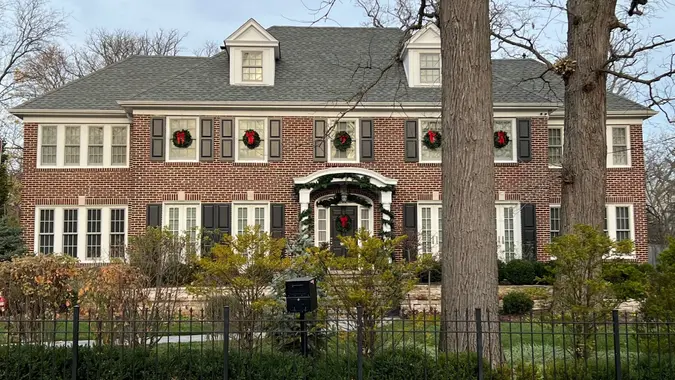Warren Buffett has Lived in the Same Home for 60 Years — Why He Does It?

Commitment to Our Readers
GOBankingRates' editorial team is committed to bringing you unbiased reviews and information. We use data-driven methodologies to evaluate financial products and services - our reviews and ratings are not influenced by advertisers. You can read more about our editorial guidelines and our products and services review methodology.

20 Years
Helping You Live Richer

Reviewed
by Experts

Trusted by
Millions of Readers
Warren Buffett, the legendary investor and one of the wealthiest individuals on the planet, has a surprisingly modest living arrangement that starkly contrasts with the lavish lifestyles often associated with billionaires. For over 60 years, Buffett has resided in the same home in Omaha, Nebraska, which he purchased in 1958 for $31,500 — roughly equivalent to about $285,000 in today’s dollars.
This decision to maintain a simple living situation provides a fascinating glimpse into Buffett’s values and approach to wealth. Here’s why he does it.
A Testament to Frugality and Stability
Buffett’s choice to live in the same home for decades serves as a powerful testament to his frugality and preference for stability. Despite his immense wealth, he has consistently demonstrated a disinterest in the material trappings of success. By staying in his Omaha residence, Buffett emphasizes the importance of living within one’s means and prioritizing financial security over ostentatious displays of wealth. This approach aligns with his broader investment philosophy, which advocates for long-term thinking and prudent financial management.
The Value of Home Beyond Price
For Buffett, the value of his home extends far beyond its market price or the cost per square foot. It’s a space that has housed memories, personal milestones, and a sense of community over the years. His statement to CNBC, “I wouldn’t trade it for anything,” underscores the emotional and sentimental value he places on his home. This perspective challenges the common notion that upgrading one’s living situation is a necessary step following financial success, suggesting instead that contentment and personal fulfillment can be found in the familiar and enduring.
A Lifestyle of Deliberate Simplicity
Buffett’s decision to remain in his Omaha home is emblematic of his broader lifestyle of deliberate simplicity. From his modest breakfast choices to his pragmatic approach to transportation and clothing, Buffett eschews extravagance in favor of practicality and efficiency. This approach not only reflects his personal values but also serves as a strategic choice to focus on what truly matters in life: relationships, health, and meaningful work, rather than the accumulation and maintenance of wealth for its own sake.
Encouraging Financial Independence and Thoughtful Consumption
Living in the same home for 60 years also serves as a lesson in financial independence and thoughtful consumption. Buffett’s ability to resist the temptation to spend on luxury items, despite having the means to do so, encourages individuals to critically evaluate their own spending habits and consider the long-term implications of their financial decisions. By prioritizing investments and savings over immediate gratification, Buffett exemplifies a path to true financial freedom.
Conclusion
Warren Buffett’s enduring residence in his Omaha home is more than just a quirk of one of the world’s richest men; it’s a reflection of his core beliefs and principles. In an era where consumerism and material success often dominate the narrative around wealth, Buffett’s lifestyle offers a compelling alternative vision. It’s one where stability, frugality, and a focus on what genuinely enriches life take precedence over the endless pursuit of more. As Buffett himself has shown, the richest life may well be the one that’s most thoughtfully lived, not the one most extravagantly spent.
Editor's note: This article was produced via automated technology and then fine-tuned and verified for accuracy by a member of GOBankingRates' editorial team.
 Written by
Written by  Edited by
Edited by 

























